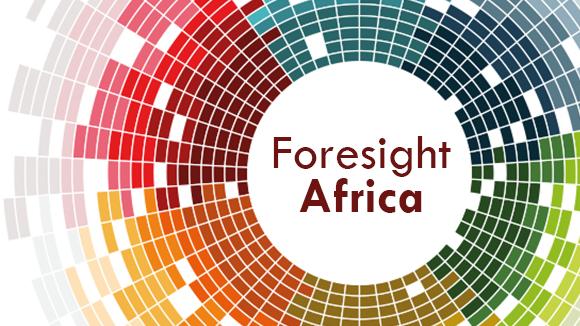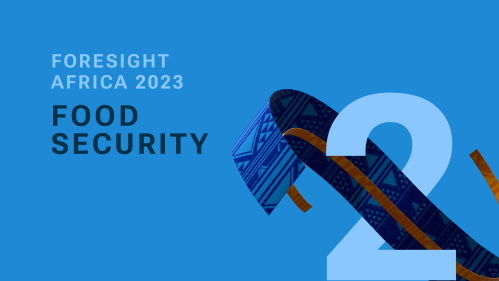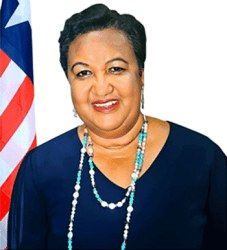Below is a viewpoint from the Foresight Africa 2023 report, which explores top priorities for the region in the coming year. Read the full chapter on food security.
 In Liberia, we hold one truth to be self-evident: If one has not eaten rice on any given day, then one has not eaten. Well, at least that is the conventional theory that has driven food policy and planning for the last 60 years.
In Liberia, we hold one truth to be self-evident: If one has not eaten rice on any given day, then one has not eaten. Well, at least that is the conventional theory that has driven food policy and planning for the last 60 years.
Rice is Liberia’s staple food, and our contemporary history has been completely shaped by rice: Its availability on the local market, price, and, to a lesser extent, quality. Since 1979, when government plans to raise tariffs on imported rice caused deadly riots, and eventually a coup d’état, public policy has favored imports over locally produced rice.
Fast forward to 2022, and it’s 4Cs: COVID-19, Climate, Conflict, and Commodity price escalations. Four simultaneous and intensifying shocks, at a time when we have not fully recovered from the previous shock of Ebola.
And here is another incontrovertible truth: Liberians’ dogged reliance on imported food is not sustainable. The looming food security crisis is an opportunity to finally tackle rice availability on three main fronts: Boosting smallholder production; taking agribusiness micro, small, and medium-sized enterprises (MSMEs) to scale; and attracting commercial agri-food enterprises.
Since we have ostensibly been doing just these things for years, now is the time to innovate the “how” of agri-food production. The “innovation” is simple: Enhance what is working, what is familiar and help farmers and businesses to produce more, faster, cheaper—and get surpluses to market. The technologies exist to do this.
Rice is Liberia’s staple food, and our contemporary history has been completely shaped by rice.
Take rice. President Weah has set up a National Rice Stabilization Task Force to ensure constant availability of rice in our markets. We have set a national goal to grow 75 percent of what we consume in four cropping seasons: A 150 percent increase in production over what we are doing now.
In setting these targets, we considered the production realities of our smallholders. Realizing the adoption of yield improving technologies has been poor, and rarely sustained past project-end, we are resolving some of the challenges brought on by limited capital and labor for any given piece of land: Improving weed and pest management on farms; post-harvest processing capacities at village level (to optimize use); and access to markets and digital buying platforms. Couple these with solutions that enhance food and nutrition security, water, and energy at community level.
We work with MSMEs along the value chain to grow or build and service and maintain the seeds, tools, and equipment needed to produce, package, transport, and market rice to urban consumers. The Liberia Agricultural Commercialization Fund is providing critical financing to innovations that service food markets and helping rice processors to scale up operations.
We are building our knowledge base and creating business profiles to attract private investments.
The global food security crisis compels Liberia to draw on its legendary resilience and creativity. We are intentional about getting rice right. And we will.
The Brookings Institution is committed to quality, independence, and impact.
We are supported by a diverse array of funders. In line with our values and policies, each Brookings publication represents the sole views of its author(s).








Commentary
Getting rice right in Liberia
February 3, 2023